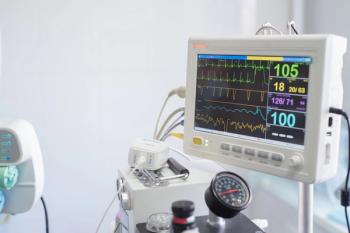
Infertility update: Should you use anti-mullerian hormone to evaluate ovarian reserve
Anti-mullerian hormone levels seem to be a more sensitive way of assessing ovarian reserve, when compared to follicle stimulating hormone (FSH).
After a series of normal test results, we often tell infertile couples that there is no discernible cause for their decreased fecundity. In these cases, it would help if we had additional tests to further evaluate a woman's ovarian reserve, especially if we are considering ovarian stimulation.
Various tests have been suggested to assess a woman's ovarian reserve, including (1) the Clomid challenge test, in which early follicular phase serum levels of FSH and estradiol are obtained, and repeat testing of FSH is done after 5 days of clomiphene citrate, and (2) a simple assessment of early follicular phase serum levels of FSH, estradiol, and inhibin B. Unfortunately, these markers remain interdependent and procurement remains cycle-dependent. Others contend that currently the best quantitative predictor of ovarian reserve is the antral follicle count (AFC). But this evaluation is also cycle-dependent and requires transvaginal ultrasonography and some degree of operator expertise. Obviously, a serum marker that reflects the nascent follicle pool but is independent of gonadotropins would be useful to both couples and their physicians. Anti-müllerian hormone (AMH) may be that marker.
The ABCs of AMH
Levels of AMH are almost undetectable at birth but increase during early childhood.2 Levels appear to be stable until adulthood and then decrease with aging as preantral follicules become exhausted.3 In women, AMH is exclusively made in the ovary and it has a fairly short half-life. Serum levels are undetectable only 3 to 5 days after ovariectomy in regularly cycling women.4
AMH apparently regulates follicular development. In rodent studies, AMH inhibited aromatase activity in granulosa cells5 and decreased follicular development in response to FSH.6 AMH-deficient mice show rapid primordial follicle recruitment, premature follicle exhaustion, and early cessation of estrous cycling.7 These findings suggest that, at least in rodents, AMH inhibits the activation of primordial follicles and the growth of preantral and antral follicles.
Throughout the menstrual cycle, serum AMH tends to remain constant or to only mildly fluctuate.8 This is consistent with the finding that there is continuous noncyclical growth of small preantral follicles. As a result, AMH can be measured at any point during a woman's menstrual cycle, obviating the need, as was required for FSH levels, of collection in the early follicular phase. This is clearly an advantage of using AMH as a marker of ovarian reserve.
Since oral contraceptives have little effect on primary and preantral follicular growth, AMH can even be obtained in women as they remain on oral or vaginal hormonal contraceptives.9 Currently little is known about the factors that regulate AMH expression, but studies have shown that AMH is not affected by changes in gonadotropin levels or by estrogen and progesterone administration. This is consistent with the knowledge that non-cyclic recruitment of follicles is a continuous process not influenced by changes in FSH.
Since AMH is relatively convenient to measure, its clinical use is becoming more popular as a way to determine inherent ovarian reserve. Clinically, the main advantage of AMH over FSH seems to be ease of collection and interpretation, and greater sensitivity to detect declining ovarian reserve. With respect to the other known markers of ovarian reserve, AMH seems to be a better reflection of the continuous decline of the oocyte/follicle pool with age, and the best marker for ovarian ageing and the menopausal transition.
AMH appears to be a more sensitive marker of ovarian reserve than FSH, inhibin B, estradiol, and antral follicle count (AFC). Serum AMH levels have been shown to correlate well with age, FSH, and the number of antral follicles, but the levels have been shown to decrease over relatively short periods of time in young ovulatory women.10 One research team, who did a longitudinal observational study in women who had AMH drawn at two distinct intervals 2.6 +/- 1.7 years apart, found a 38% reduction in AMH, whereas the AFC and levels of FSH and estradiol did not change.10 In a separate longitudinal observational study, AMH was the only marker that consistently declined over 4 years in both younger women (<35 years) and in women over 40 years.11
Indeed, AMH has been shown to closely predict the ovarian response in ovarian hyperstimulation for in vitro fertilization. Higher levels of AMH are associated with a greater number of retrieved oocytes.12 Another study compared FSH, inhibin B, and AMH to the number of oocytes collected in IVF patients who were poor responders. AMH proved to be the best single marker to predict ovarian response to gonadotropin stimulation.13 Although multiple studies confirm the predictive value of AMH in ovarian responsiveness, it appears to be less predictive of pregnancy rates.14
Newsletter
Get the latest clinical updates, case studies, and expert commentary in obstetric and gynecologic care. Sign up now to stay informed.
















